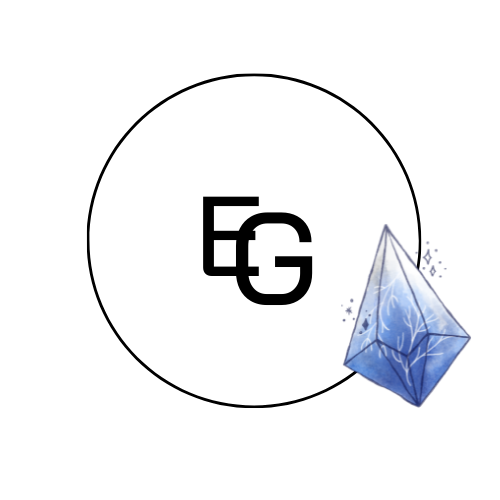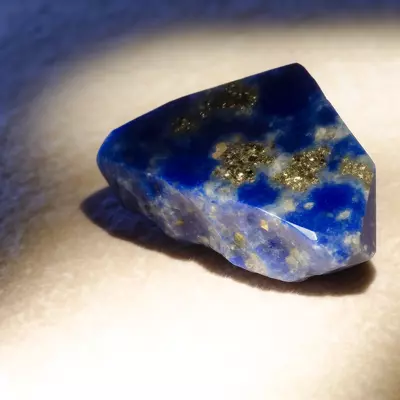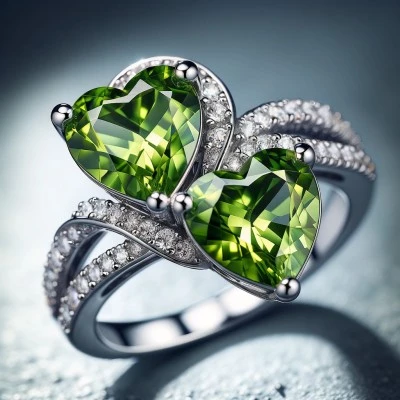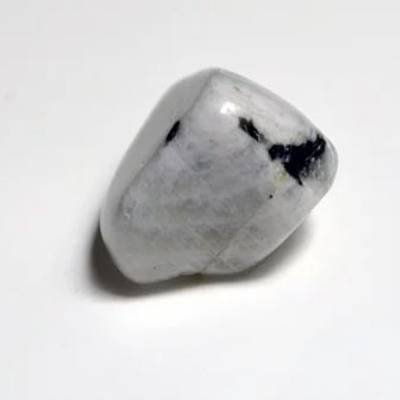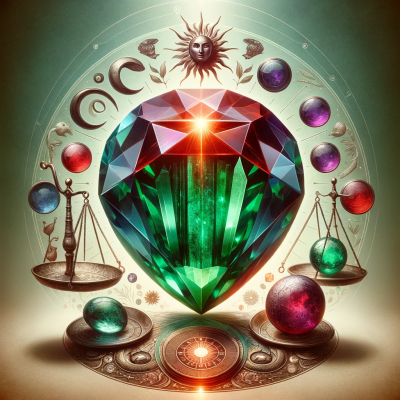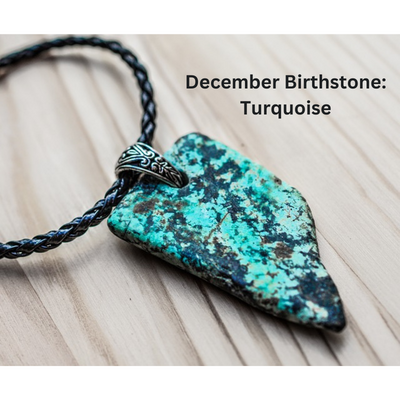Discover the Lapis Lazuli Crystal Meaning and Uses: A Journey Through Time
Lapis lazuli, a gemstone as ancient as history itself, holds profound symbolic significance across various cultures. Revered for its deep, celestial blue hue, this stone is more than just a visual marvel; it embodies wisdom, truth, and a connection to the divine. Historically used in jewelry and ornamentation, its applications extend into spiritual and healing realms, making it a coveted element for those seeking enlightenment and personal growth.
As an Amazon Associate, we earn a commission from qualifying purchases.
I. Introduction
Lapis lazuli, a gemstone as ancient as civilization itself, has captured the human imagination through millennia. Its deep, celestial blue, often flecked with golden pyrite, mirrors the night sky, making it a symbol of wisdom, power, and a conduit to the divine. This article explores the historical significance, meanings, and modern uses of lapis lazuli, shedding light on its enduring allure and practical applications in today’s world.
II. Historical Significance of Lapis Lazuli
A. Ancient Civilizations and Lapis Lazuli
Lapis lazuli’s legacy stretches back to ancient civilizations, including the Egyptians, Sumerians, and Babylonians, where it was prized for its beauty and rarity. These cultures used lapis lazuli in ceremonial artifacts and jewelry and to adorn the tombs of the elite, believing it offered protection in the afterlife and facilitated connection with the gods.
B. Lapis Lazuli in Art and Jewelry
Throughout history, lapis lazuli has been a favored material in art and jewelry. The Renaissance artists ground it into a fine powder to create ultramarine, the most expensive of all blue pigments. This practice underscores the gemstone’s value and the lengths to which artisans would go to capture its stunning color.
C. Spiritual and Religious Importance
In spiritual and religious contexts, lapis lazuli has been used in various amulets and seals. Its deep blue shade is often associated with the heavens, symbolizing holiness and virtue. Many cultures believe the stone has the power to ward off evil, promote harmony, and bring inner peace to its wearer.
III. The Meaning Behind Lapis Lazuli
A. Symbolism of Color and Composition
The rich blue color of lapis lazuli symbolizes depth, trust, and loyalty. Its golden inclusions represent enlightenment and the pursuit of knowledge. This combination of elements makes the gemstone a powerful symbol of wisdom and truth.
B. Lapis Lazuli and Its Connection to Wisdom and Truth
Lapis lazuli is often called the “stone of wisdom.” It is believed to enhance intellectual ability, encourage the desire for knowledge, and aid in understanding. Its connection to truth is not just philosophical but also practical, as it is thought to improve honesty in personal and professional relationships.
C. The Stone of Protection and Healing
Traditionally, lapis lazuli is considered a protective stone that shields the wearer from negative influences. It is also credited with various healing properties, including reducing stress, bringing peace, and alleviating insomnia.
IV. Uses of Lapis Lazuli in Modern Times
A. Therapeutic Properties and Healing Uses
In contemporary healing practices, lapis lazuli is used in crystal therapy to harmonize the mind, body, and spirit. It is believed to boost the immune system, lower blood pressure, and soothe areas of inflammation.
B. Lapis Lazuli in Meditation and Spirituality
In meditation, lapis lazuli is used to deepen awareness and promote self-reflection. Its calming properties help in achieving a state of serenity, making it an excellent tool for spiritual exploration and psychic development.
C. Decorative and Ornamental Applications
Today, lapis lazuli is widely used in jewelry, decorative items, and even in the architectural detailing of luxury homes and buildings. Its vibrant color and historical significance continue to make it a sought-after material for designers and artisans.
V. Lapis Lazuli in Products and Consumer Goods
A. Jewelry and Personal Adornments
Lapis lazuli remains a popular choice for jewelry, including rings, necklaces, and bracelets. Its deep blue hue adds a touch of elegance and mystery to any piece.
B. Home Decor and Amulets
The gemstone’s aesthetic appeal has found its way into home decor, from inlaid lapis lazuli tables to ornamental balls and amulets that bring a sense of peace and beauty into living spaces.
C. Review of DUQGUHO Lapis Lazuli Worry Stone
The DUQGUHO Lapis Lazuli Worry Stone exemplifies the modern use of lapis lazuli in products designed for healing and meditation. Its polished surface and ergonomic shape make it ideal for stress relief and anxiety reduction, offering a tangible connection to the stone’s therapeutic properties.
VI. How to Choose and Care for Lapis Lazuli
A. Selecting Quality Lapis Lazuli
When choosing lapis lazuli, look for stones with an intense, deep blue color and minimal white calcite streaks. The presence of pyrite flecks is often desirable, adding to the stone’s beauty and value.
B. Cleansing and Recharging Lapis Lazuli
To maintain its vibrancy and energy, lapis lazuli should be cleansed regularly using smoke, running water, or by placing it on a bed of rock salt. Recharging under moonlight or with selenite can also enhance its healing properties.
C. Storing and Handling Tips
Lapis lazuli should be stored separately from harder stones to avoid scratches. Gentle handling and avoidance of exposure to harsh chemicals will preserve its luster and color for generations.
VII. FAQs
Q: Can lapis lazuli be worn every day?
A: Yes, lapis lazuli can be worn daily, but the stone should be removed before engaging in activities that could damage it, such as exercising or cleaning with harsh chemicals.
Q: How can I tell if my lapis lazuli is real?
A: Real lapis lazuli has a rich, deep blue color with possible gold pyrite flecks and white calcite inclusions. It should feel cool and smooth to the touch.
Q: Is lapis lazuli expensive?
A: The price of lapis lazuli varies depending on its quality. Stones with a vibrant blue color and minimal calcite inclusions are more valuable.
Q: Can lapis lazuli go in water?
A: Brief exposure to water is generally safe for lapis lazuli, but prolonged soaking can damage the stone.
Q: What chakra is lapis lazuli associated with?
A: Lapis lazuli is primarily associated with the third eye chakra, enhancing intuition and psychic abilities.
Q: How do you recharge lapis lazuli?
A: Lapis lazuli can be recharged by placing it under the moonlight or near a selenite crystal.
Q: Does lapis lazuli fade in sunlight?
A: Prolonged exposure to direct sunlight may cause the color of lapis lazuli to fade. When not in use, it’s best to store it away from sunlight.
VIII. Conclusion
A. The Enduring Legacy of Lapis Lazuli
The journey of lapis lazuli from the mines of ancient civilizations to modern-day artifacts and healing practices underscores its timeless beauty and enduring significance. Its deep blue hue continues to captivate, symbolizing wisdom, truth, and the pursuit of the divine.
B. Personal and Spiritual Growth with Lapis Lazuli
For those seeking personal and spiritual growth, lapis lazuli offers more than just physical beauty. It serves as a tool for self-reflection, enlightenment, and the strengthening of the mind-body-spirit connection.
C. Encouraging Mindfulness and Peace
In a world that often feels chaotic and stressful, lapis lazuli stands out as a beacon of peace and tranquility. Its use in meditation and healing practices encourages mindfulness and provides a sanctuary for those seeking solace and inner harmony.
IX. Suggested Readings
Before diving into the depths of lapis lazuli’s rich history and spiritual significance, it’s beneficial to explore further through literature. Here are some suggested readings that offer insights into the world of crystals and gemstones:
- “The Crystal Bible” by Judy Hall – A comprehensive guide to crystals, including lapis lazuli, with detailed descriptions of their properties and uses.
- “Crystals for Healing” by Karen Frazier – This book explores the therapeutic uses of crystals, offering practical advice on how to use them for healing.
- “Stone of Heaven: The Secret History of Imperial Green Jade” by Adrian Levy and Cathy Scott-Clark – While focused on jade, this book provides a fascinating look at the history and significance of precious stones, offering context for the appreciation of lapis lazuli.
- “Encyclopedia of Crystals” by Judy Hall – An extensive reference that covers a wide range of crystals, including lapis lazuli, with beautiful photographs and information on their healing properties.
Exploring these texts can deepen one’s understanding and appreciation for lapis lazuli and other gemstones, enriching personal and spiritual practices. Whether one is a seasoned collector or new to the world of crystals, these books offer valuable insights into the power and beauty of the earth’s treasures.
